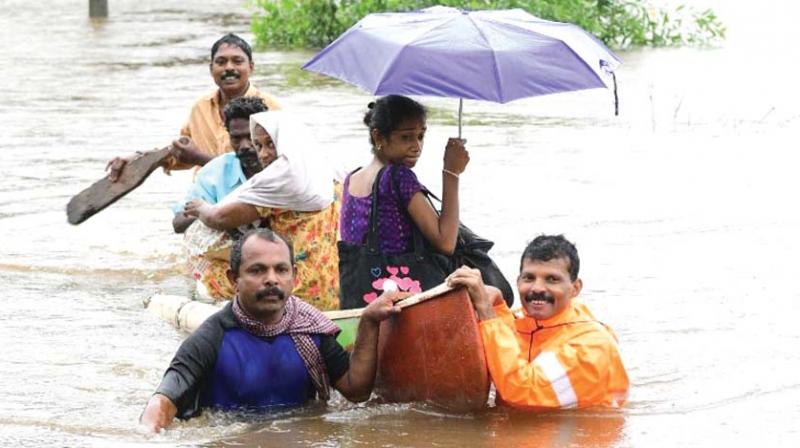Kochi: Authorities fail to face the floods again

Kochi: The recurrence of severe floods and landslips in many areas in the state since Thursday has brought to focus the changing dimensions of natural calamities and the un-preparedness of the authorities at various levels of state administration in dealing with such hazards. Going by the experience of the past three days, the various agencies of the state administration will have to go a long way to ensure safety to the people in times like these.
The officials' failure to incorporate data and information on vulnerable spots into a dynamic system of hazard mitigation on real-time basis is now evident. Chief Minister Pinarayi Vijayan lamenting on landslides hitting at unexpected places making things difficult for rescue efforts is a mockery of the knowledge-base available with official agencies and in the public domain in the state. Many studies in the past, including the Gadgil committee report, have warned of landslip hazards in the hill districts of Kerala.
The Kerala State Disaster Management Authority (KSDMA) chaired by the chief minister had brought out a natural hazard zonation map of Kerala as early as in 2014. The map shows the vulnerable spots and places hit by landslides in the past three days and last year. Pinarayi Vijayan told reporters in Thiruvananthapuram on Saturday that eight districts in the state witnessed 80 landslips this time while the number was 50 in 2018.
The Post-Disaster Need Assessment (PDNA) report brought out by global agencies, including World Bank and Asian Development Bank, in October last year pointed to the vulnerability of the state. "Kerala, however, is highly vulnerable to natural disasters and the changing climatic dynamics given its location along the sea coast and with a steep gradient along the slopes of the western ghats," the report said. The vulnerability is accentuated further as the state is densely populated with 860 people per sq km.
The failure of successive governments in the state to implement the recommendations made in these reports has made the situation worse. Regulating settlements and unbridled stone-quarrying are some of the recommendations contained in the reports.
The difficulty to reach landslide- affected areas in Wayanad and Malappuram highlights the lack of foresight on the part of the authorities concerned despite repeated prior warnings. The PDNA has called for a four-pillar approach for long-term sustainability of the state. These include integrated water resources management (IWRM), eco-sensitive and risk-informed approaches to land use and settlements, inclusive and people-centred approach and knowledge, innovation and technology for reconstruction of the state.
Dr. J. Devika, professor, Centre for Development Studies, has said that the government had put the people-centred approach of PDNA on the backburner and opted for the typical top-down approach of the bureaucracy. Although the state is staring at another crippling floods, the government is yet to provide an update about the implementation of the four-pillar recommendations.
Dr. S. Abhilash, assistant professor, department of atmospheric studies, Cusat, stressed the importance of a decentralised system of disaster management to address the challenges facing the state. The lack of preparation is visible in the drainage canal cleaning in corporations like Kochi as well as the conditions in the remote tribal settlements in high range districts like Idukki, Wayanad and parts of Malappuram and Palakkad.
James Zachariah, a former senior official of Kerala forest department, pointed out that the flooding in Munnar, a major tourist destination in the state, was caused by the failure of the local administration to remove silt and sludge from river beds and other places.

